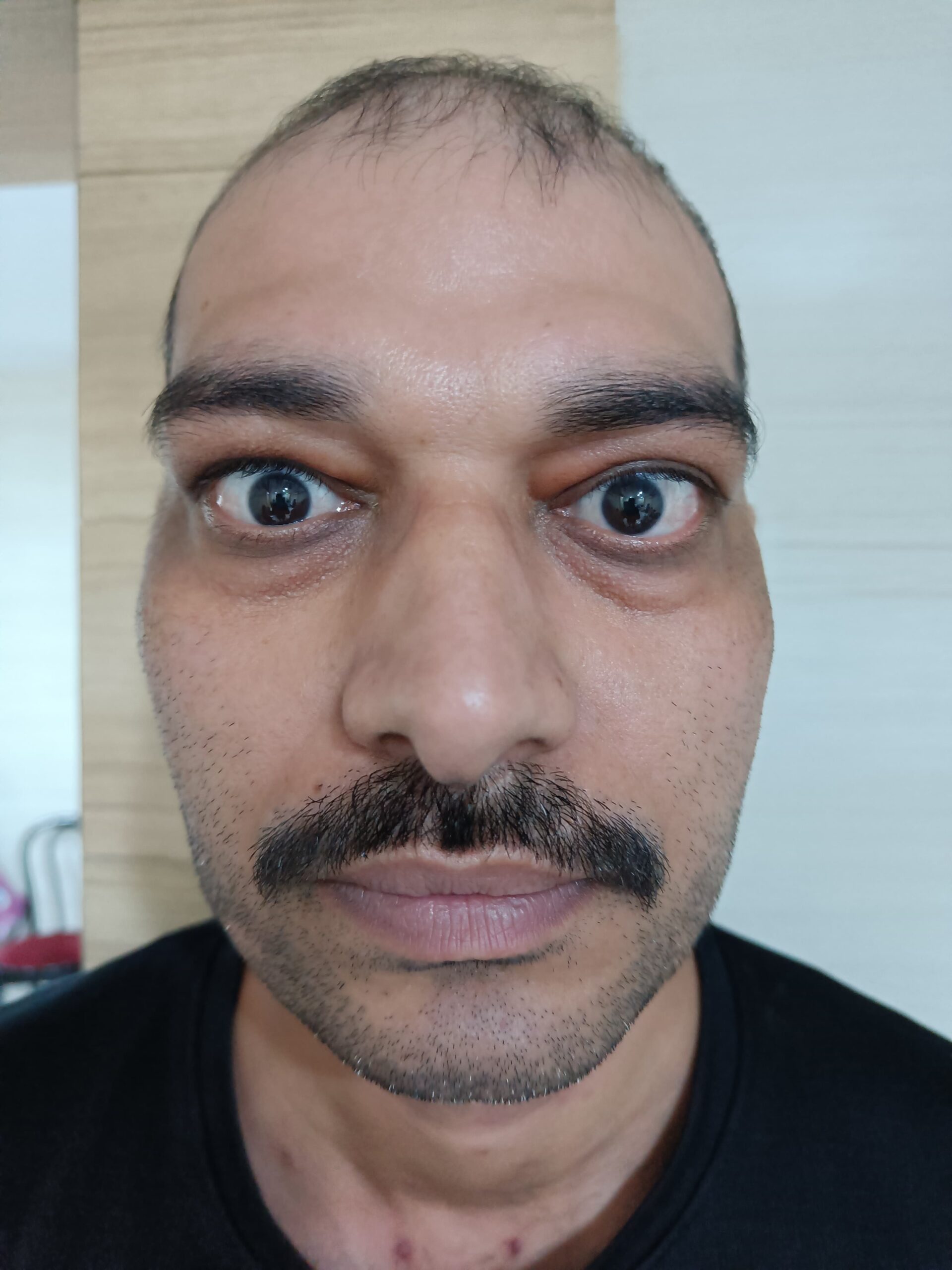
Graves’ Ophthalmopathy, also known as Thyroid Eye Disease (TED) are conditions that
affect the eyes and are often linked to an overactive thyroid gland. Let’s delve into what
Graves’ Ophthalmopathy is, its symptoms, causes, and how it can be managed
effectively.
What is Graves’ Ophthalmopathy?
Graves’ Ophthalmopathy and Thyroid Eye Disease (TED) are terms often used
interchangeably to describe a condition where the immune system attacks the tissues
around the eyes. This results in inflammation, swelling, and changes in the appearance
and function of the eyes.
Symptoms of Graves’ Ophthalmopathy or TED:
Graves’ Ophthalmopathy or TED can cause various symptoms, including:
- Bulging Eyes (Proptosis): The eyes may appear to bulge outwards due to
swelling behind them. - Eye Redness and Swelling: Inflammation can lead to redness and puffiness
around the eyes. - Dryness and Irritation: Many individuals experience dryness, grittiness, and
discomfort in their eyes. - Double Vision: Changes in eye muscles can cause double vision or difficulty
focusing on objects. - Difficulty Closing the Eyes: Some people may have trouble fully closing their
eyes, leading to issues with blinking and eye protection. - Sensitivity to Light: Increased sensitivity to light (photophobia) is common.
- Eye Pain: Pain or discomfort in and around the eyes, especially with movement,
can occur.
Causes of Graves’ Ophthalmopathy or TED:
It is often associated with Graves’ disease, an autoimmune disorder that leads to
excessive thyroid hormone production. The exact cause is not fully understood, but
factors such as genetics and environmental triggers, like smoking, may play a role.
Diagnosis of Graves’ Ophthalmopathy or TED:
Diagnosing Graves’ Ophthalmopathy typically involves a comprehensive eye
examination by an ophthalmologist. This may include measuring eye protrusion,
assessing eye movement, and evaluating symptoms such as dryness and double vision.
Blood tests to check thyroid function may also be performed to confirm the diagnosis.
Management and Treatment Options:
Treatment for Graves’ Ophthalmopathy or TED aims to reduce inflammation, alleviate
symptoms, and preserve vision. The treatment plan may include:
1. Medications:
- Corticosteroids: These anti-inflammatory drugs can help reduce swelling
and inflammation around the eyes. - Immunomodulators: Medications that suppress the immune system may
be prescribed to control the autoimmune response. - Teprotumumab: A newer medication specifically approved for the
treatment of moderate to severe TED.
2. Eye Care:
- Lubricating Eye Drops: Artificial tears can help relieve dryness and
irritation. - Eye Protection: Wearing sunglasses and using humidifiers can help protect
the eyes from environmental irritants.
3. Smoking Cessation:
- Quitting smoking is crucial, as it can worsen symptoms and increase the
risk of complications in Graves’ Ophthalmopathy or TED.
4. Surgery:
- Orbital Decompression: Surgical removal of bone or fat from the eye
socket can relieve pressure on the eyes and reduce bulging. - Eyelid Surgery: Corrective surgery may be needed to address eyelid
retraction or other deformities.
5. Regular Monitoring:
- Patients with Graves’ Ophthalmopathy or TED should undergo regular eye
exams to monitor their condition and detect any changes early.
Graves’ Ophthalmopathy or Thyroid Eye Disease can significantly impact a person’s
quality of life and vision. However, with early diagnosis and appropriate management,
many individuals can experience relief from symptoms and prevent complications. If
you’re experiencing any symptoms of Graves’ Ophthalmopathy or TED, such as bulging
eyes or eye pain, it’s essential to seek medical attention from an eye care specialist
promptly.
By understanding these conditions and working closely with healthcare professionals,
individuals can effectively manage Graves’ Ophthalmopathy or TED to maintain optimal
eye health and overall well-being.


